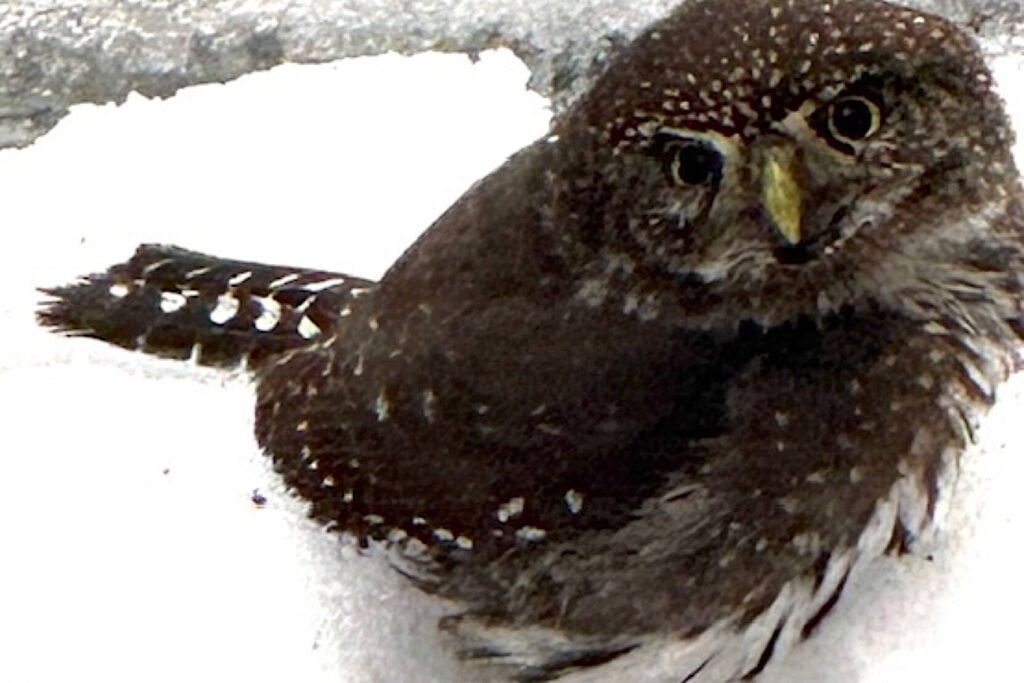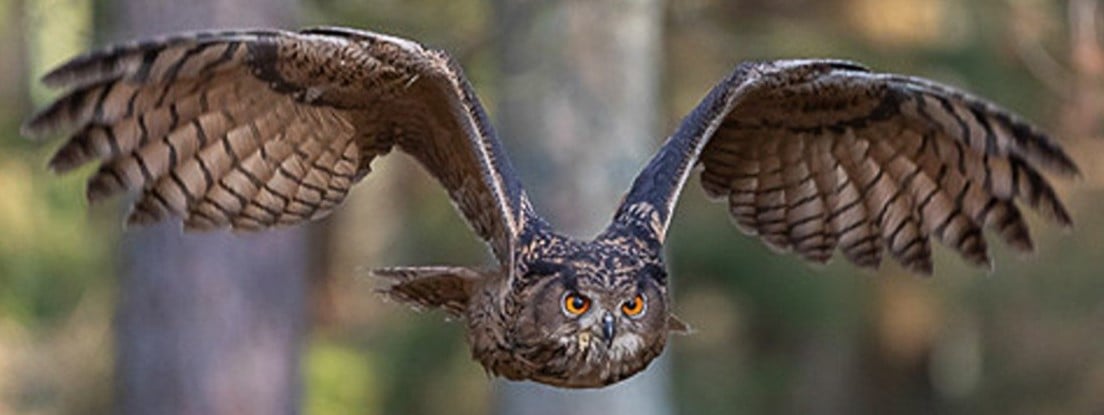From Juneau Empire
This little owl was quite frequently detected in the trees at the edge of the wetlands this fall. And one appeared on the doorstep of a friend’s house, just sitting in the snow, which she photographed. I took that as a sign that it was time to write about them.
Pygmy owls (genus Glaucidium, with about 29 species) live all around the world in a variety of habitats. Some of them are nocturnal, like many other owls, and have asymmetrical ear openings on either side of the head, the better to hear their prey. But others are day-active, with symmetrical ear openings. Most of them live in forested and other wooded habitats, but some occupy more open areas.
Our species is known as the northern pygmy owl (G. gnoma) and it is one of the diurnal species. This species is a collection of subspecies that have some differing features; the southern subspecies are sometimes categorized as a separate species, the mountain pygmy owl. As in other pygmy owls, on the back of its head there are two dark feathery ovals, often circled by a few white feathers, that resemble eyes; these false eyespots are thought to deter predators (chiefly other birds) or small birds that might mob the owl.
The northern pygmy owl ranges from the Yukon into Central America, occupying various forested habitats, primarily in mountainous areas. All pygmy owls are cavity-nesters, commonly using old woodpecker holes or occasionally trees with heart rot and — in open regions — sometimes holes in sand banks or termite mounds. Males are thought to carve out their territories and then females begin to select nest sites. Females are larger than males and usually produce clutches of five or six eggs. Cavity nests may be depredated by weasels, probably squirrels, and other birds.
During the nesting season, females stay in the nest for about seven weeks, doing all the incubation and brooding of young chicks. She emerges only to defecate or spit up pellets of undigested prey parts or receive food from the male, who does all the hunting during that time. Prey received from the male is torn up by the female and fed to the little chicks. As the chicks grow, she begins to hunt too.
Chicks stay in the nest almost four weeks, covered at first by fluffy white down that is replaced by darker downy plumage and then by juvenile plumage. Hatching is often spread over two or three days, so some chicks are a bit larger than their siblings. How and if the nest is kept clean seems to vary. Fledgling juveniles stay together for a few weeks and are fed by both parents, but the relative roles of dad and mom are reported to vary among families. Fledglings begin to hunt for themselves when they have been out of the nest for a week or two.
The diet consists chiefly of small vertebrates in northern populations, but also includes lots of large insects such as moths. Pygmy owls are sit-and-wait predators, lurking in the trees and perhaps moving from perch to perch until they spot a likely victim. Prey is captured chiefly on the ground or in the understory. Some very active hunters have captured over a dozen small birds and mammals in a day. In some areas, small snakes and lizards are also captured.
As with most cavity-nesters, nesting success is usually good: better than 80% of nests produce chicks, sometimes over 90%. These birds seem to be short-lived, living only a few years, but the data are very skimpy; a few adults are known to have lived over four years.


TIL!
So is a burrowing owl a type of pygmy owl?
Depredate is an interesting word. From modern language it would seem the opposite of what it means with the "de-" prefix, but that is apparently Latin for "thoroughly" making it mean to thoroughly consume.
I'm glad you pointed it out. I just used context and moved on, but now I know a fancy biology word!
Burrowing Owls were once thought to be their own unique genus, but generic testing has had them grouped with the Little Owls (genus Athene.)
Pygmy Owls are genus Glaucidium, and their closest relation is the genus Surnia, which is the Northern Hawk Owl, also featured today.